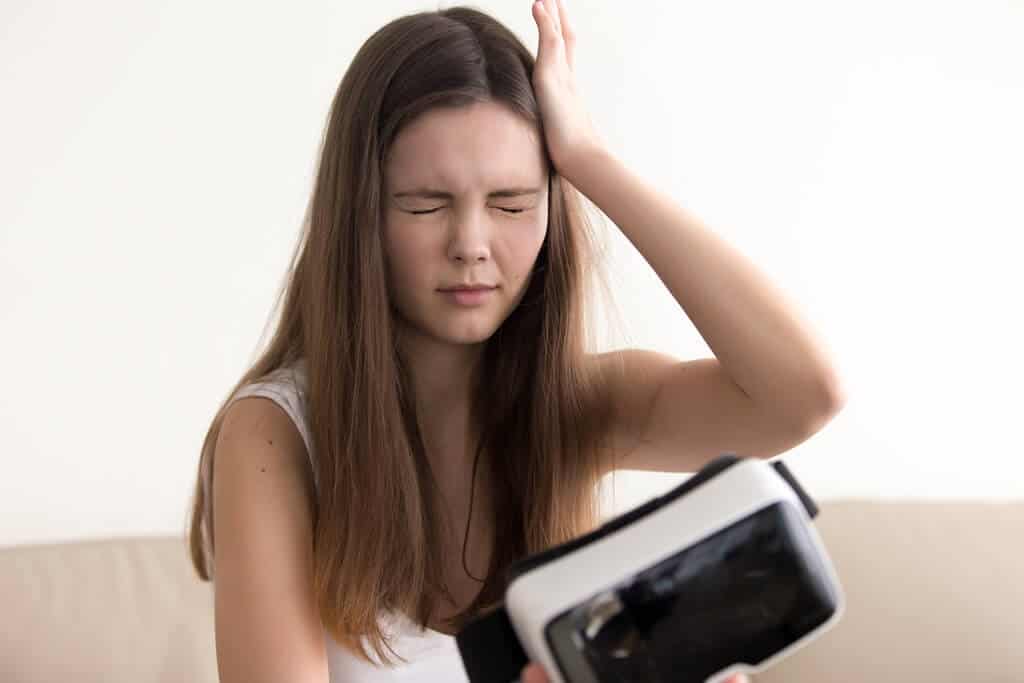Would you often get the feeling that the brightness from your computer monitor is piercing your eyeballs and causing your head to pound? Or do you get confused or queasy when you gaze at your mobile device? Whereas such feelings may appear to simply be eye pain or exhaustion from staring at the computer for too prolonged, these were done the sign of a syndrome known as cybersickness.
Scientists aren’t all in accord on why individuals get cyber sick. One popular concept sensory hypothesis claims that it stems from a disparity of authority by the body parts that control sight and balancing. Even if your head isn’t a movement, your eyeballs get data that convinces them you’re shifting. This mismatch between visual impression and tactile sensation could be triggered by daily technological designs.
Managing Cybersickness: Know It First
In this era, most people are used to have digital devices at home and the workplace which leads to having stress on the eyes. If proper precautions and care are not taken it may create some more health issues also according to experts.
Comparable to fatigue, cybersickness is a collection of sensations that occurs in the lack of actual movement. There are three types of side effects: vomiting, locomotor problems, and overall disorientation. Working too hard the nerve that governs eye motion causes oculomotor symptoms like eye strain, weariness, and headaches.
Dizziness and vertigo are two symptoms of disorientation. Several symptoms of cybersickness, such as trouble concentrating and hazy vision, fall into multiple categories. These problems might last for hours and have an impact on sleeping efficiency.
Augmented reality, on the one side, superimposes a virtual world on top of the real world. Head-mounted gadgets that nevertheless enable you to view what’s in ahead of you, or apps as Pokémon Go out on your mobile or computer, are examples. The oculomotor strain in AR is more acute.

Virtual reality (VR) is a type of tech that completely filters out your vision of the actual world and substitutes it with an intense, virtual one. Popular gaming systems such as Fb’s Oculus devices and Sony’s PlayStation VR make it widely accessible. Virtual reality can cause extreme nausea, which becomes worse over time. Many people may be unable to use specific applications and games as a result of this.
If you’re experiencing cybersickness as a result of spending too much time on your laptop or mobile, there are some things you may do to alleviate the pain. Blue light glasses filter a few of the light source waves produced by your gadget display, which could cause eye pain and sleep disturbances. Zooming in on a computer or utilizing larger font sizes can also assist alleviate vision loss and make everyday tasks more manageable.
Signs such as a strong migraine eye strain, or vertigo, for example, may impair your coordination and focus. If those adverse effects continue when driving, you may be involved in a car collision. It’s unclear if the user, the tech firm, or another party is liable for damage resulting from gadget usage cybersickness signs.
As just a consequence of the COVID-19 epidemic, the work-from-home trend has developed Short shorts, bedhead, and Zoom meetings have supplanted 9-to-5s and commuting for several individuals. However the efficiency is clear, it has also been accompanied by a growing understanding of how exhausting it could be to look at a computer for more than 40 hours each week.
But don’t allow your cybersickness to get the best of you. Individuals might a day be allowed to appreciate breakthroughs in new technology despite getting sick as scientists strive to uncover methods to manage and avoid cybersickness throughout all platforms.
With over 15 years as a practicing journalist, Nikki Attkisson found herself at Powdersville Post now after working at several other publications. She is an award-winning journalist with an entrepreneurial spirit and worked as a journalist covering technology, innovation, environmental issues, politics, health etc. Nikki Attkisson has also worked on product development, content strategy, and editorial management for numerous media companies. She began her career at local news stations and worked as a reporter in national newspapers.
